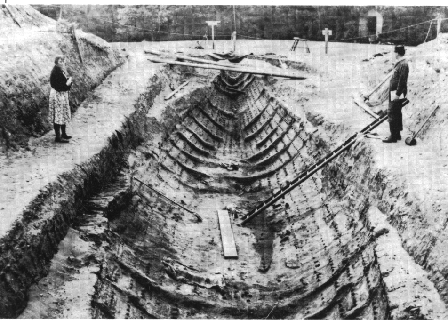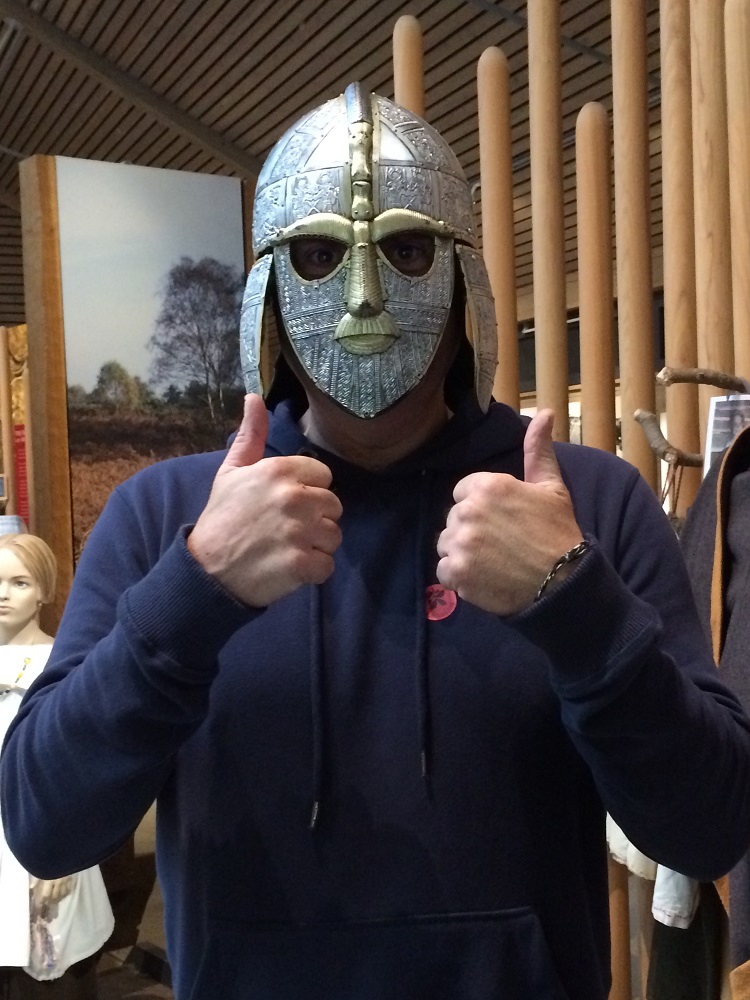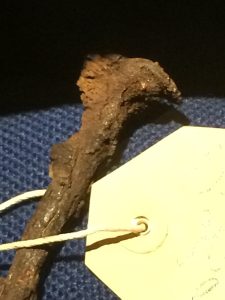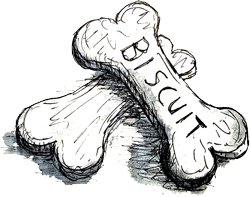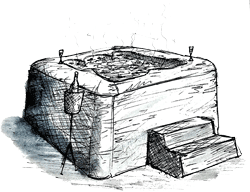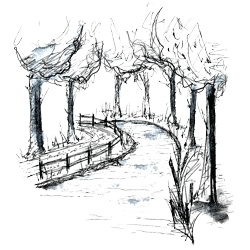
Enjoy a historical day out from our holiday cottages in Suffolk
By Carl Scott
Having not been since I was a kid, I thought it was high time I went back to Sutton Hoo as it’s steeped in history and loads of our guests go there! It’s only the other side of the river Deben from Woodbridge, just 25 minutes from our holiday cottages in Suffolk. Whilst in the mood we visited the Tide Mill ‘Living Museum’ too!
Vikings in Suffolk
I have this long distant memory of Viking history nearby but for years I’ve been meaning to get back to Sutton Hoo, so this weekend I did. This is the bit where I become a tour guide;
Sutton Hoo, on the banks of the river, is the site of two cemeteries dating back to the 6th and 7th centuries. The most significant of the two contained an undisturbed Viking ship burial, including a fabulous horde of Anglo-Saxon artefacts, of outstanding historical and archaeological importance. Most of these are now in the British Museum but there is a fabulous exhibition at Sutton Hoo, depicting as much as we can ascertain of the history of the site.
The site was discovered in 1939 after the then owner, Mrs Pretty, brought in an archaeologist after a friend allegedly saw some ‘ghostly’ sights. What he found was staggering; the most significant being a Viking longship, used as the ‘tomb’ of a nobleman. As one stands at the top of the hill overlooking the valley with the river Deben and Woodbridge below, it’s incredible to think of this ship being dragged up and then buried!
Sutton Hoo is of primary importance to early medieval historians because use of the site culminated at a time when Rædwald, the ruler of the East Angles, held senior power among the English people. It is believed that he is the most likely candidate to be the guy buried in the ship. The site has been instrumental in our understanding of the Anglo-Saxon Kingdom of East Anglia and the early Anglo-Saxon period as a whole. Please note that this is NOT Rædwald, it’s me in the dressing-up bit of the visitor centre! I’m sure it’s for kids of all ages!
There are similar finds elsewhere, predominantly in Scandinavia but this is one of the most magnificent archaeological finds in England for its size and completeness, far-reaching connections, the quality and beauty of its contents, and the profound interest of the burial ritual itself. The excavation was funded by Mrs Pretty initially but as the significance grew, the big boys took over. This is one of the rivets recovered from the ship, holding the wooden braces together. Incredible to think this is almost 1500 years old!
The end result was the unearthing of the ship, as well as other burials and the finding of numerous significant artefacts including metalwork gold & gem dress fittings, a ceremonial helmet, shield and sword, a lyre, and many pieces of silver plate from Byzantium. All of these are now in the British Museum but the exhibition at Sutton Hoo has replicas, as well as a reconstruction of the ship’s burial chamber, giving one a real sense of the skilled workmanship involved.
It is widely believed (by me) that the Vikings would have enjoyed a well-earned break from pillaging at my holiday cottages in Suffolk. We have a strict no-pillaging rule here so they could have really switched off and chilled out.
The entire site is now owned by the National Trust and has a visitor centre, restaurant and gift centre. The burial field can be toured in the summer months and at weekends and school holidays year-round. Entry was £8.50 per adult when we went.
The Tide Mill; popular with guests at our holiday cottages in Suffolk
Back over Wilford Bridge into Woodbridge, the Tide Mill is a focal point of Suffolk, let alone the town. It sits proudly on the river and even though there’s been a mill there for 800 years, it is the last working tide mill in the country!
At some point in history Henry VIII confiscated it and then Elizabeth I sold it to Thomas Seckford, a local notable figure, whose family owned it for over 100 years, then followed by several private owners. In 1793 the present mill was built on the site and through various periods of closure it was saved in 1968, restored and opened to the public in 1973. It has been brought back into use as a fully working tide mill. It gives us a fascinating insight into a living example of our industrial and cultural heritage.
The mill wheel turns today, depending on the tides, and they produce fabulous flour, which is available at the mill, as well as in a number of local delis.
The flour from the Tide Mill is sold in two grades: fine wholemeal flour, similar to plain flour, and suitable for most baking such as bread, savoury pastry, pizza bases, biscuits and slightly denser cakes; they then also produce a traditional slightly coarser textured flour with tiny pieces of bran, making it ideal for bread and other bakery products.

